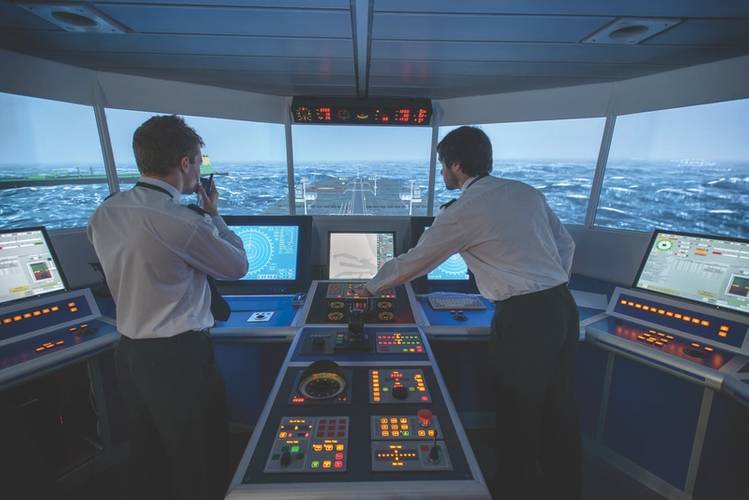Satellite-based connectivity has always played a critical role for the maritime sector. As the communications expectations of ship owners, passengers and crews continue to grow, maritime service providers are seeing a transformation in the type and quantity of applications that need to be supported at sea.
The advent of VSAT broadband services is driving a shift away from traditional, low-level L-band connections that ship operators have relied upon for decades. VSAT services are preferred to respond to the demand for high-speed broadband that can support bandwidth-intensive applications. This satellite broadband enables vessel owners to improve daily operations, increase profitability and improve life onboard for crew members.
With ship operators increasingly investing in big data analytics to enable route optimization, fuel management and new services, the demand for bandwidth is expected to increase exponentially over the next few years.
With efficient broadband available, new applications track the movement of containers and valuable goods in real time. Overall, the digitization of the maritime industry will transform vessels into smart ships, resulting in a more competitive industry.
Industry forecasts tell us that the number of VSAT-equipped vessels will grow from 13,200 in 2015 to 32,700 in 2025. The merchant segment will see the biggest growth in installed VSAT terminals during this period, increasing from 6,000 to nearly 20,000.
This growth in maritime demand for connectivity comes at a time when satellite broadband to mobile VSAT platforms is being dramatically improved. Leading the improvement is the introduction of transformational technology in the form of high-throughput satellites and the development of next-generation ground antennas and modems.
The Advent of HTS
Delivering the required bandwidth to the maritime sector is one of the driving forces behind the high-throughput satellites (HTS) being launched by satellite operators. These next-generation satellites deliver the improved performance needed to power the most sophisticated maritime applications. The improvements in connectivity are delivering benefits across multiple maritime sectors, each with differing requirements and customer demands:
- For commercial shipping operators, HTS can keep vessels in constant communication with onshore offices, delivering real-time information on ship operations that can lead to improvements in fuel management or route adjustments to avoid bad weather. Container tracking and even container climate control protects precious cargo, lowering insurance costs. All of these can directly benefit the owner’s bottom line.
- For cruise lines, HTS is meeting broadband requirements for passengers and supporting the operational data needs of ship owners. The typical family walks onto a cruise ship with up to seven connected devices. Passenger applications include web surfing, email, social media, gaming and video entertainment. Also, an equally capable return link is becoming more important, as passengers are now sending photos and video to social media in addition to downloading entertainment. The same connectivity is also being used by crews, enabling them to stay in touch with relatives at home while keeping up with events of the world.
- For the superyacht and fishing sectors, advances in antenna technology are making it easier to deliver this broadband connectivity to smaller-profile ships – delivering the same services enjoyed by larger vessels.
HTS platforms have helped maritime operators stop viewing satellite connectivity only as a necessary expense for crew welfare. Instead, they now view it as way to fully integrate their global fleets with onshore operations. However, not every HTS platform is the same.
The Intelsat EpicNG platform is based on an open architecture and backward-compatible design that allows end users to seamlessly migrate their existing network onto the HTS platform. Overnight, Intelsat EpicNG can bring 165 percent improvement in efficiency. Users can start with their current ground network, scaling incrementally to integrate the latest in satellite and terrestrial technology. This approach minimizes capex investment and operating cost. Combining this approach with flexible user plans enables service providers to deliver bandwidth to maritime customers when and where it is needed. Our experience implementing Intelsat EpicNG and bringing it to our customers on four continents has affirmed our beliefs about the potential of HTS. Our vision of the continuing evolution of our HTS services – with next-generation antenna technology such as that being developed by Kymeta and someday integrated Low Earth Services on the same platform – sets forth a road map to the future. That road map encourages our customers to think about solutions over a five-year or even 10-year investment cycle.
Future of Maritime Communications
In the future, we anticipate the development of more safety and security broadband-based applications – as well as increased access to training and enhanced crew services. Improved communications via HTS will ensure that ships have the same digital tools as their onshore offices.
While the use of cloud-based services is relatively low today, the virtualization of satellite services will enable ship owners to leverage the best technologies in the ecosystem to further improve operational efficiency.
The maritime industry is also adopting the Internet of Things (IoT), which improves transport and logistics, enhances safety and reduces the administrative costs of regulatory compliance. HTS will satisfy the bandwidth demands of IoT, as well. Vessel owners already are using technology to create automated ships, manned with smaller crews, that require robust satellite capacity for operations, navigation and onshore monitoring as they cross the world’s oceans.
This is the first step toward the larger, more autonomous ship with minimal crew. For these autonomous vessels, shipping companies will need to be sure that the satellite operator they work with has enough capacity available for all ships on dense shipping routes and has sufficient backup available should a satellite ever fail.
Our technology road map provides visibility well into the next decade, making Intelsat uniquely positioned to advise maritime customers on building networks that support the needs of tomorrow.
It is truly an exciting time to serve the maritime industry. HTS and other advancements remove the limits of communication and help enable rapid advances in the connected and autonomous systems that require secure ship-to-shore communications. It is now up to ship owners to take advantage of these technologies to make their own operations and the entire worldwide shipping industry more efficient.
The Author
Mark Rasmussen leads Intelsat’s Mobility business unit, providing global satellite-based solutions for the maritime, aero and connected-transportation markets. He has more than 20 years of experience in the telecom industry.














